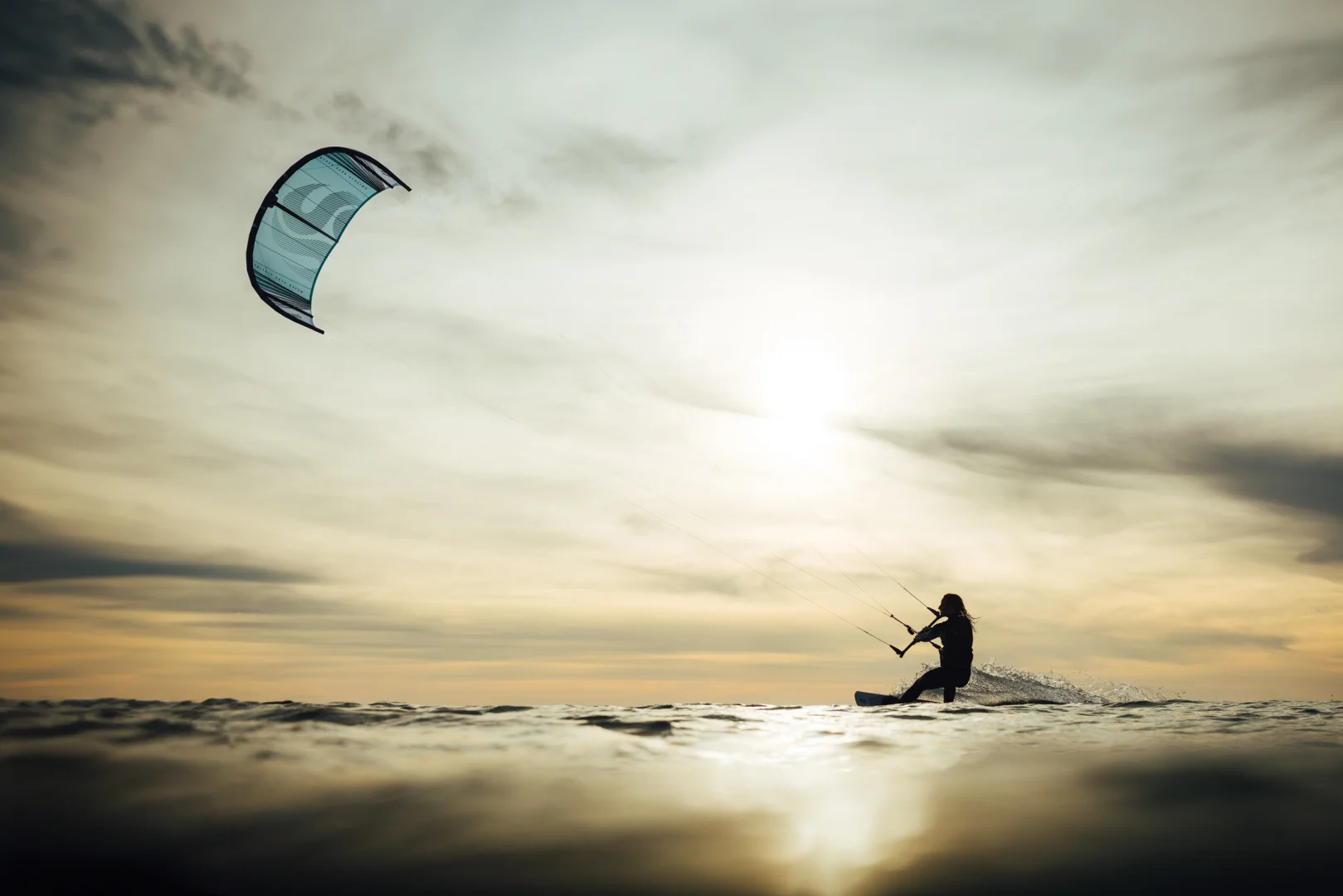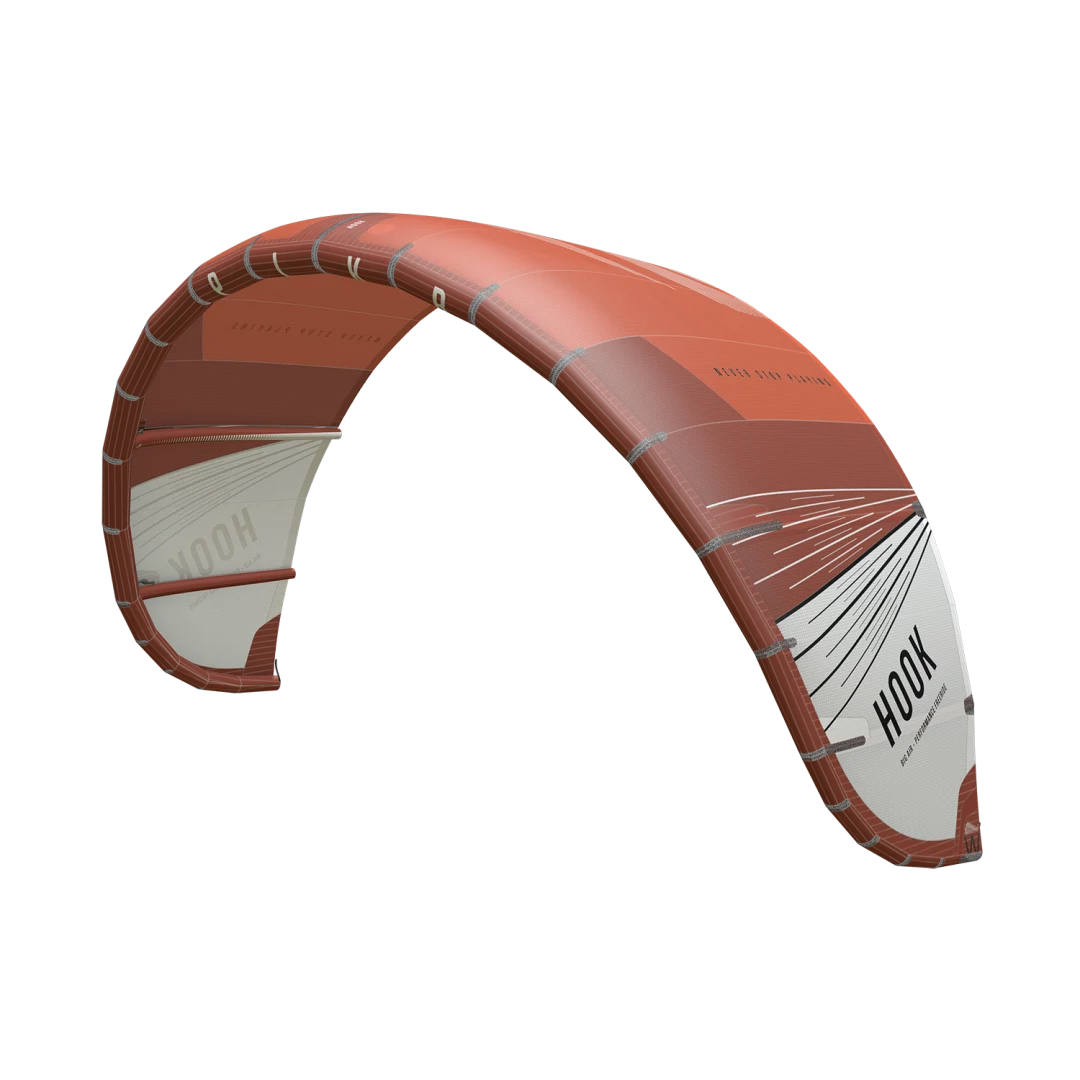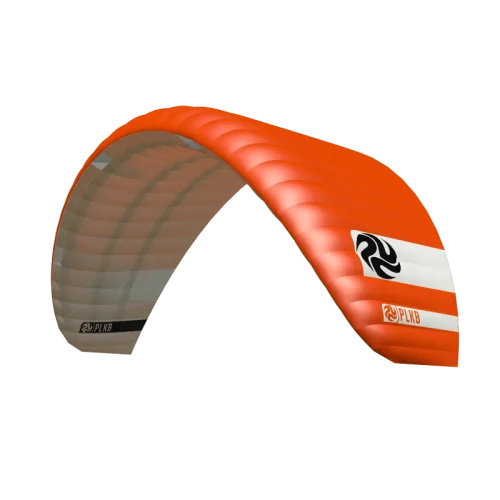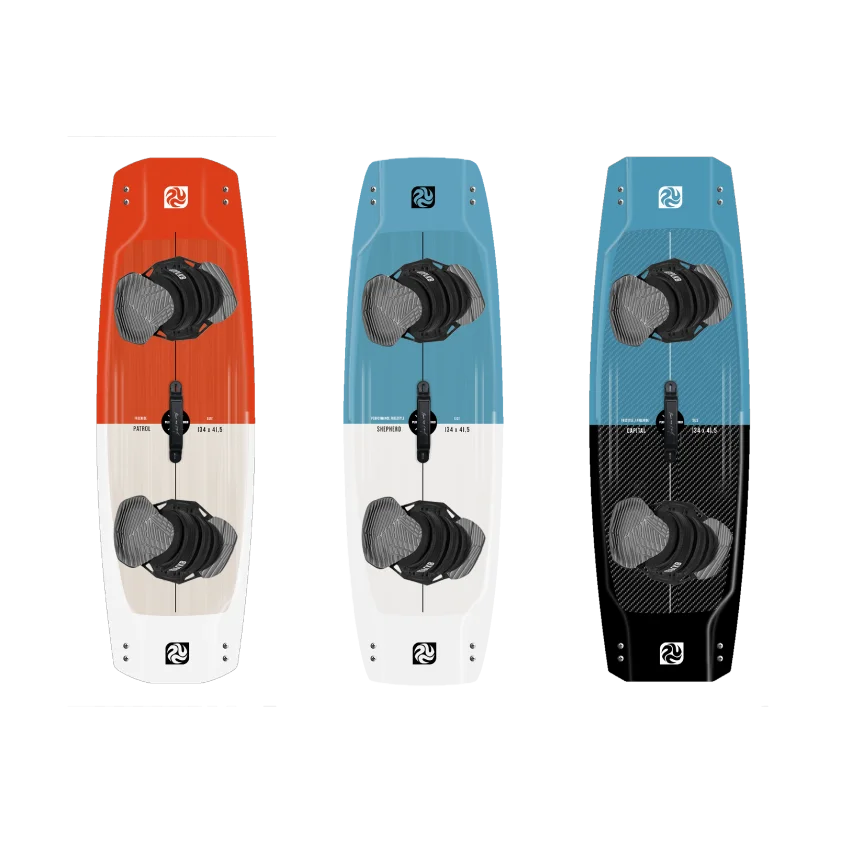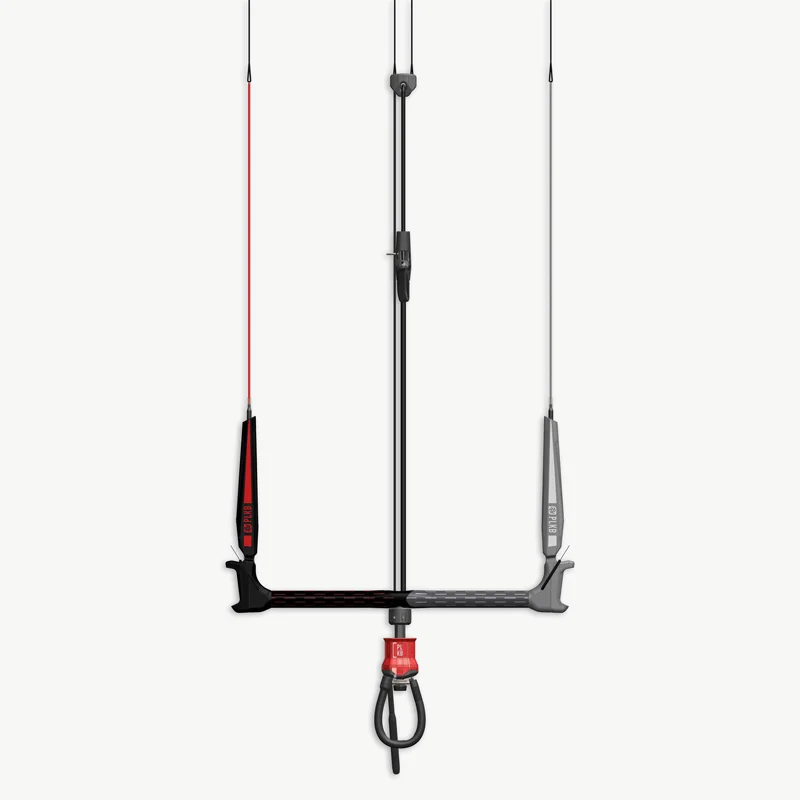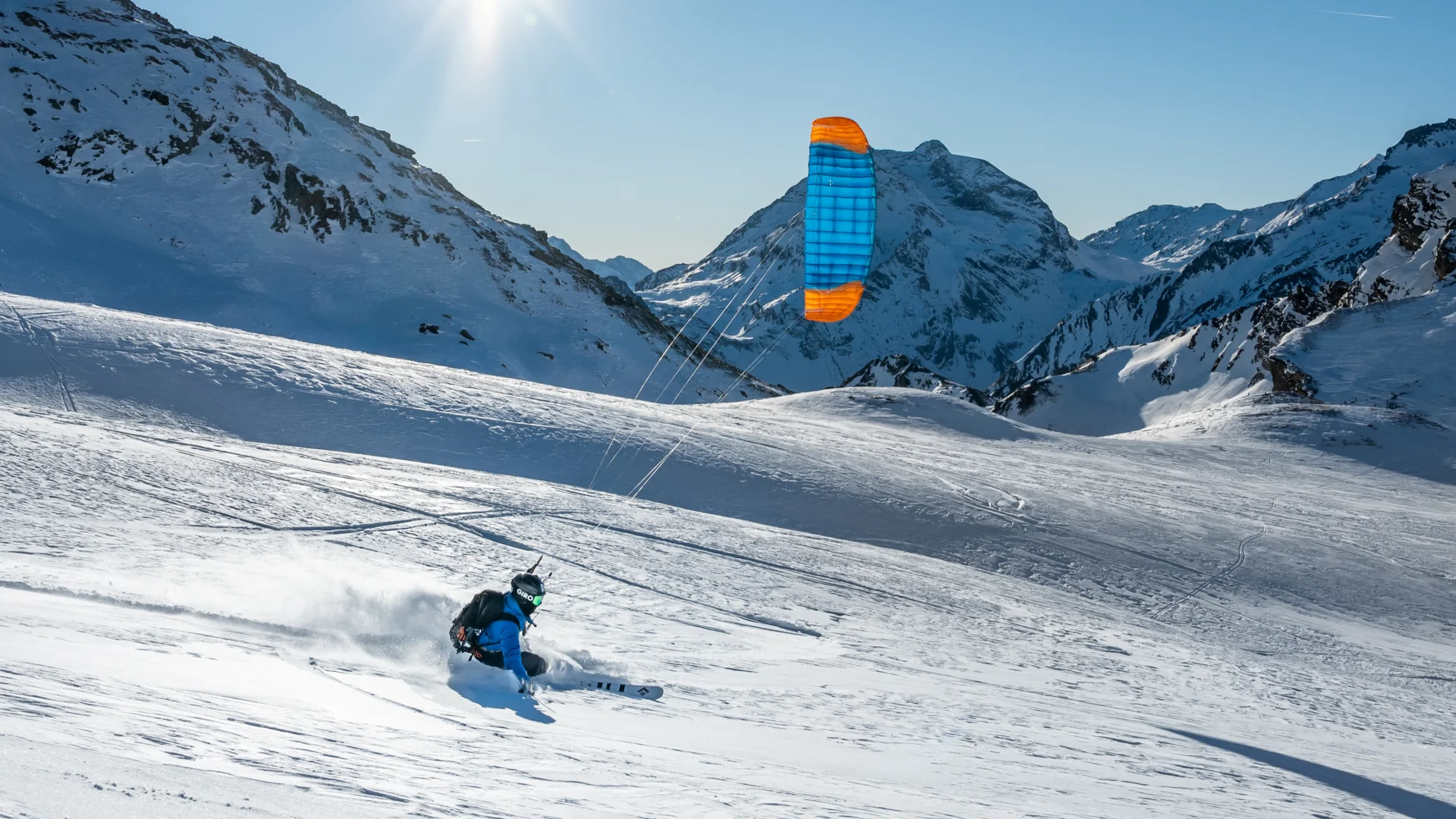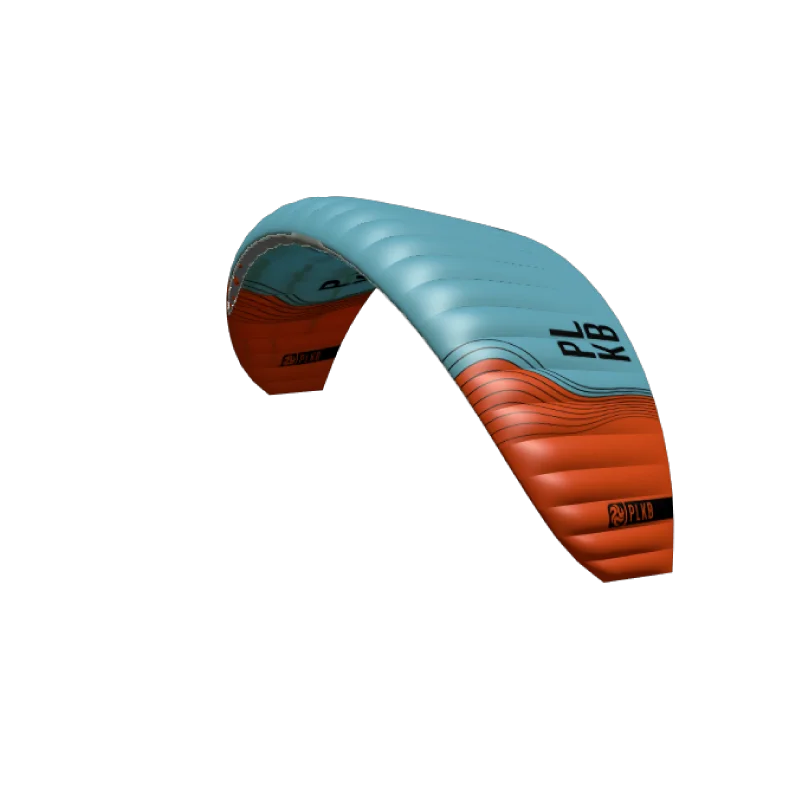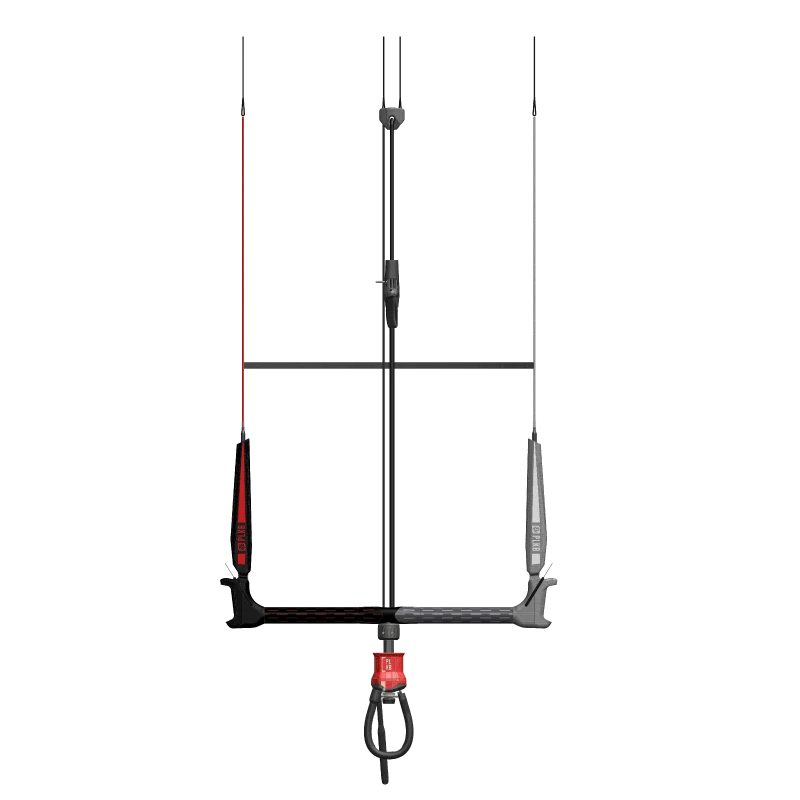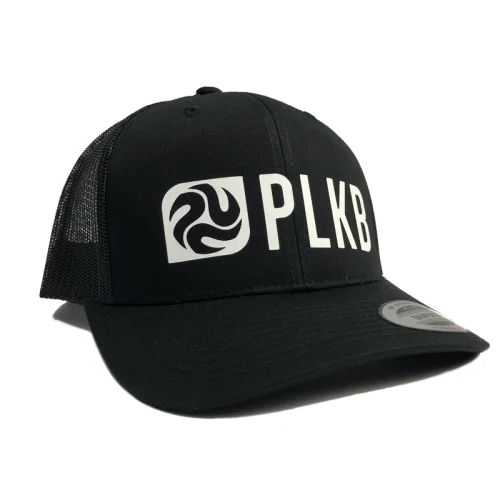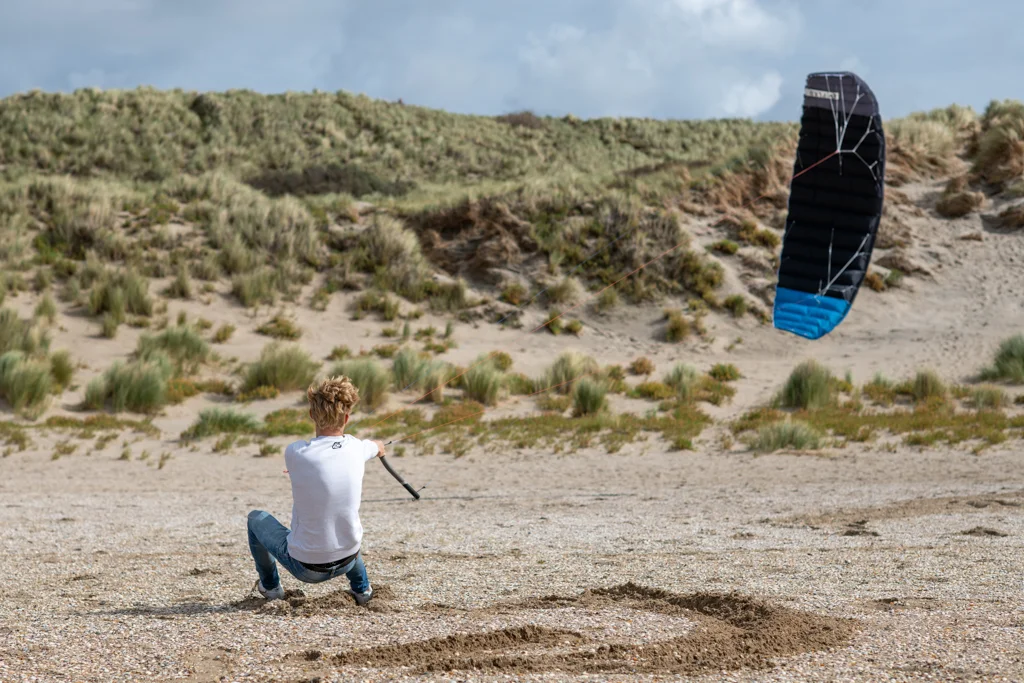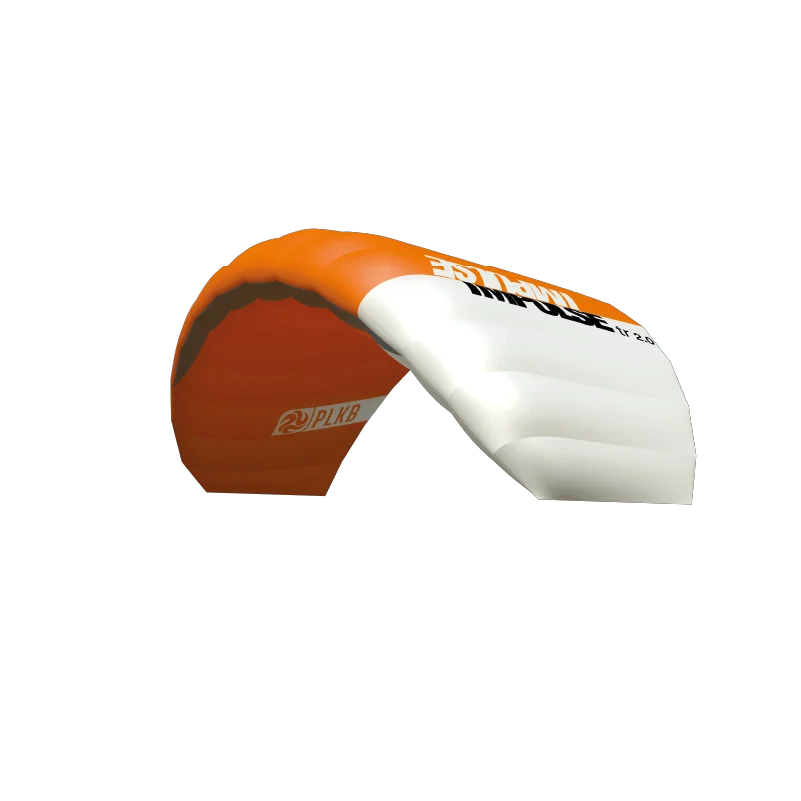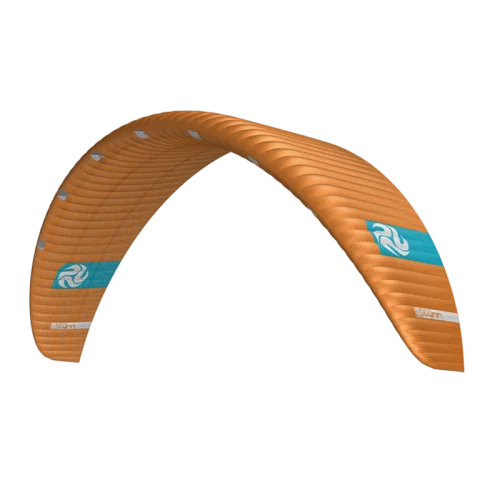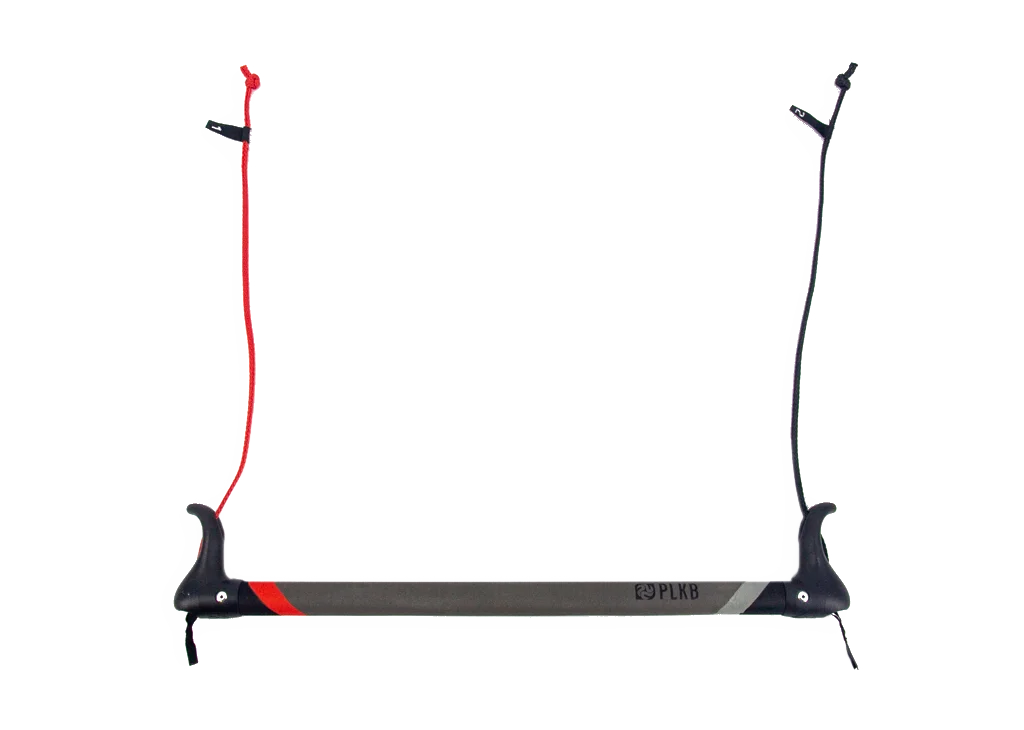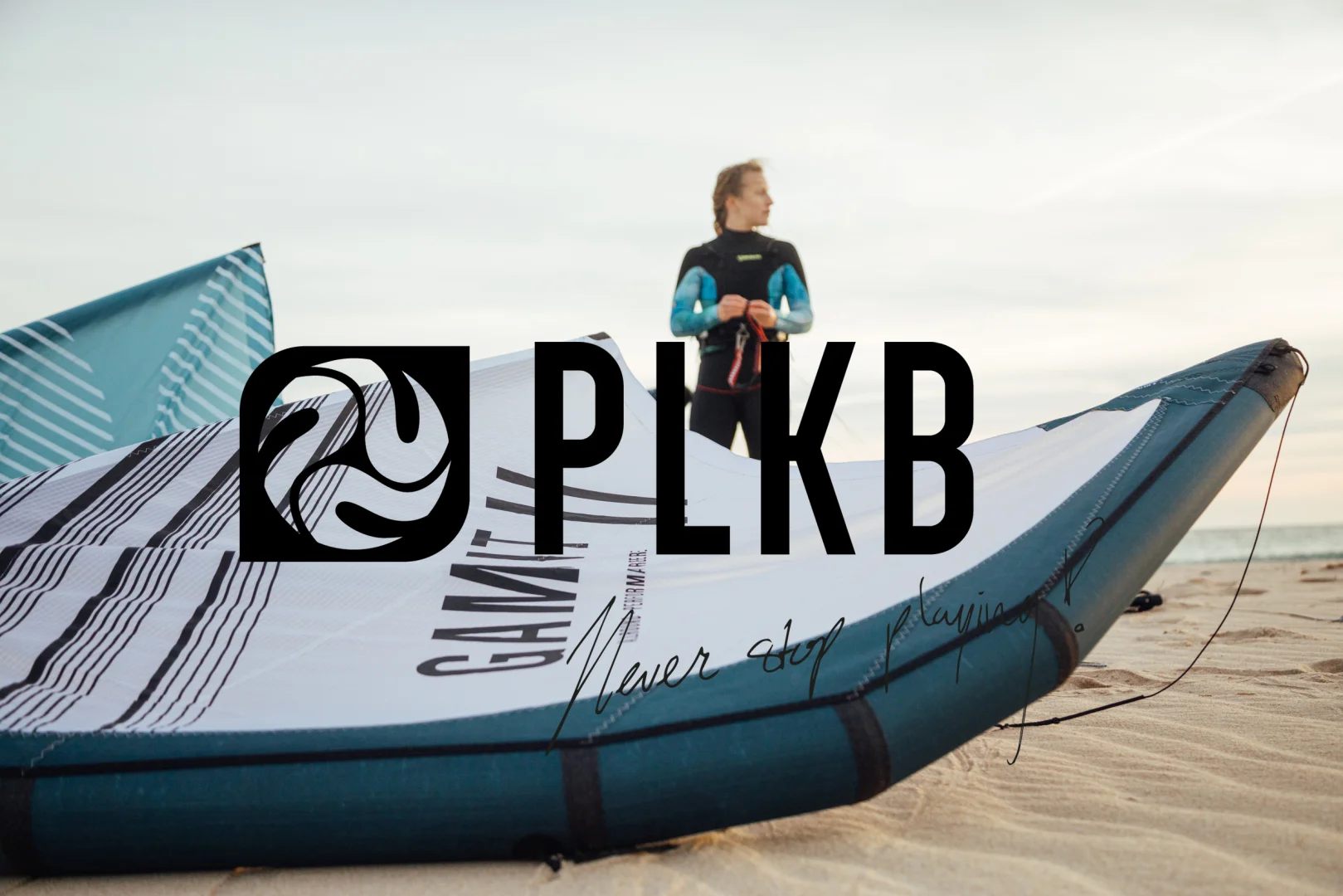TEST TEAM NOTES
Regular readers of this magazine know that we don’t usually place too much focus on testing foil kites. Race kites are often technical to use and designed for a very small niche of top riders who are usually all sponsored anyway. On top of that they’re very expensive.
The Nova, however, is very relevant because it brings the benefits of foil use to regular freeride foilers at a fraction of the cost. Interested? You should be.
A lot of set-up preparation of a foil kite is actually done when you pack the kite away once you’ve finished a session. If you’re careful about fixing the steering line attachment points on the bridle to each other and then tying them securely to one point near the centre of the kite before you roll it up; when you next unroll the kite, the bridles are very easy to line up for flight. Thankfully, the bridles on the Nova are actually nicely compact and easy to visually see when you’ve got the three layers of bridle attachment points all clear.
The canopy is a closed cell design, so just remember to close the little Velcro opening in the trailing edge (that lets the air out when you pack the kite away), and sit the kite with the upwind tip secured down with sand / pebbles and then position the kite just slightly across the wind, so a bit of wind can enter the front cells, filling up with air while you unwrap the lines from your bar. (no kite pump needed- nice!)
PREPARATION
The Peter Lynn Navigator bar is exactly the same set-up as a regular inflatable tube kite control bar, so totally familiar. It’s not the most high-spec system, but it’s all there – a decent quick release, line unspinner, smooth trimming cleat above the bar and a comfortable but hard wearing grip. The foil kite version of the Navigator has the grab handle fixed to the back stearing lines that allows you to grab it and pull hard to collapse the kite when you’re ready to self-land.
So, once you’re ready to go and have your lines set up across the wind – not directly downwind as you do on a tube kite- recheck everything’s lined up and attached as it should be. Then put a layer of sand / pebbles in the centre of the trailing edge so it’s evenly and centrally weighted down. Go to your bar, hook in and then very slowly walk towards the wind and steadily away from the kite. The cells will continue to fill. When you’re ready and the kite looks good, continue to walk directly into the wind and the kite will start and rise up downwind. Remember, should you be unnerved, or if you have second thoughts, you can always just grab the big handle on the back lines and immediately collapse the kite.
As the kite climbs up, sheet out to reduce the power and once the kite is safely up at 12, sheet in to pressure the back lines and the Nova will quickly fully inflate all the way across to the wingtips. It’s really easy. Once the kite is overhead you’ll be amazed at how stable it feels. It may look to be very high overhead compared to your LEI, but the Nova never overflies itself. It has awesome auto-zenith stability – and this is the real advantage you’re buying into when switching from an LEI to a foil kite for hydrofoiling. You gain so much more confidence in light winds.
FLYING THE NOVA
The ten meter is fantastic in winds of around 10 knots- that’s really light. And we were still okay when the wind picked up towards 14 or 15 knots. The nova does everything you initially need from a foil kite for light wind foiling. Steering steadily and driving forward under its own steam, you can foil across beautifully smooth waters at speed, feeling very secure. The Nova is a dream at the edge of the window where your LEI kite might struggle to find the energy to climb safely up to the top of the window if you fall off your board. It’s like cheat light wind kiting on this.
There is a bit of adaption when dropping the kite in the window for a board start; not much happens until the kite starts to drive around its bottom turn but then you then have loads of smooth drive once it’s moving forward. So you kind of adapt to that, roll up onto your heels and then as the kite starts tracking forward you’ll be pulled smoothly up onto your foil within an instant. Great sheeting range allows you to feel in control of any shifting gusts. Although the Nova has really good forward speed, it’s nothing like that of a race kite, so suits today’s popular freeride hydryfoil wings and you won’t feel as if your foil is constantly trying to keep up with the kite. Everything’s evenly balanced.
Turning the Nova is very different to your ten metre LEI, but the steadiness in the air and forgiving drift when the lines feel a bit slack means that as long as you pull hard on the bar to turn the kite, even if you don’t manage to turn very tightly on your board, the Nova will drive you out of your turn once it starts tracking forward again.
We did have a session on a twin-tip in 18-20 knots and while the Nova offers superb riding speed, the lift overhead is fairly hollow unless you time things perfectly. The Ozone Hyperlink which doubles as a good boosting kite, also costs a lot more. Look at the Nova for what it is – a superb entry into light wind hydrofoiling.
We also know from some of our instructor friends who have added a couple of smaller size Novas to their teaching quivers. For a relatively low price they can offer students good sensations of traction power when the wind is light, but they’ve also come to appreciate using those smaller sizes in windier hydrofoil sessions too, because they’re much more dynamic in their handling then the 10 metre.
SUMMARY
This is quite a specific kite programmed for hydrofoiling, but if you’re looking to open up your riding window without the complication of a race kite, this is a really good option that won’t break the bank. Stable and easy- you can really push your light wind limits.
KW liked: Total confidence with the kite overhead and at the side of the window in light winds – completely different to most LEI kites.
KW would change: We didn’t find the boost button as easy as some foil kites, but in reducing that extreme forward flight speed and lift, the Nova has become a super easy kite for most people to use with their foils.
Build quality 8
Water relaunch 7
Full package 7,5
Drift DT
Low end 9
Boost 4
Top end 6
Hang-time 6
Steering speed 3,5
Unhooked DT
Turning circle 6
Crossover 3
Bar pressure 5
Ease of use 7,5
Sizes: 4, 6, 8, 10, 12

